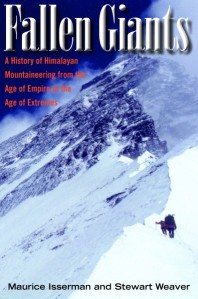Time to Eat the Dogs
A Podcast About Science, History, and ExplorationArchive for Announcements
New Worlds

Life cover from 22 February 1954 featuring shot of film 20,000 Leagues Under the Sea
At times I think about getting rid of my laptop, dumping it into the trash or tossing it over the guardrail on I-84. It works perfectly fine. But its role in my life increasingly bothers me. It feels invasive, a tool that has become a crutch, mediating almost all of the activities of my life: my communications with students, friends, and colleagues, my meeting place for committees, spreadsheet for calculating grades, library for reading newspapers and searching archives, store for ordering books, entertainment center for films, sports pages, and blogs.

I find myself thinking — dolefully, wistfully — of paper and pencil, of writing notes on index cards, thwacking out papers on a typewriter, writing letters on rough-edged stationary, reading books slowly and deliberately on my couch rather than gutting them like fish on the deck of a ship.
Most of all, I don’t like what my laptop does to the way I think. I used to spend a great deal of time tunneling in on subjects, digging into the arcana of history like a wood bore. Now I feel I spend a great deal of time skittering over subjects, a flat rock thrown over a calm pond. I cannot place all of the blame on my laptop. It comes from having too many things to do.
Being too distracted is a lament common to Americans and Europeans since the 18th century. Do our lives benefit from the conveniences of modern life? Or are these conveniences a subtle gloss that separates us from the vibrancy of raw experience? A laminate that protects us from the authentic life? Or, as Thoreau puts it:
I went to the woods because I wished to live deliberately, to front only the essential facts of life, and see if I could not learn what it had to teach, and not, when I die, discover that I had not lived. I did not wish to live what was not life, living is so dear… [Walden, ch. 2]
I think Thoreau draws this dichotomy a bit too starkly. My feeling is that all of life is authentic; experiences are real no matter how mediated they are by technology or modern convenience. Still I’m not letting my laptop completely off the hook. For all of its impressive powers, the networked computer is crack cocaine for the skittering mind, the gateway drug of associational thinking.
Still, I won’t throw it away. First, it doesn’t belong to me and I would have to pay back my dean. Second, it has brought me into contact with fascinating people and amazing places, a New World of information that I absorb in bits and pieces.
Ok, enough deep thoughts. Here are some new links I’ve uncovered in my skittering hops across the pond.
Google recently worked out a deal with Life Magazine, scanning decades of photos and putting them in a historical archive online. This is a fabulously rich collection of twentieth-century images, particularly in the field of exploration. Try out, for example, terms such as expedition, voyage, underwater, capsule, and planet. You can also search Google for life photos directly – just enter your search term followed by “source: life”. When this returns a list, specify “images” in the tab at the top.
The Norman B. Leventhal Map Center at the Boston Public Library offers a much smaller set of archival images, five to be exact. But the five images in question, European maps of discovery from 1520-1792, are too rich to be missed. Each map offers a snapshot of European geographical knowledge of the world, from the shape of continents and novel modes of map projection, to elaborate cartouches showing the lifeways of native peoples.

Finally two sites I just learned about today. The first is Big Dead Place, an online journal devoted to Antarctica, edited by Nicholas Johnson, author of a book of the same name published by Feral House Publishing in 2005. Johnson has some great interviews and analysis of South Polar exploration.
For an impressively massive list of all things Antarctica, also check out Dr. Elizabeth Leane’s Representations of Antarctica which breaks up the subject into categories of fiction (juvenile and adult), short stories, poetry, films and television, as well as literary and cultural criticism.
Thank You FHSA
This morning the Forum for the History of Science in America presented me with their 2008 Book Prize for my book The Coldest Crucible. Officer Paul Lucier presented the prize:
On behalf of the membership and officers of the Forum for the History of Science in America, it is my pleasure to announce that the 2008 Forum Prize Committee has unanimously agreed to award this year’s book prize to Michael F. Robinson for The Coldest Crucible: Arctic Exploration and American Culture, published in 2006 by the University of Chicago….this is a history of science of a very different sort. Instead of focusing on how the explorers collected specimens or tried to map the icy unknown, Robinson explains, in very clear and refreshingly concise fashion, how the Arctic and its explorers tried to collect sponsors and funding, and how they tried to present themselves and their expeditions as relevant to a large public.
My last time in Pittsburgh was in 1998, also at a History of Science meeting. It was the occasion of my first academic paper. I read it, hunched over a podium, to four elderly men in varying states of consciousness. I was tense, the paper was dry, but I don’t think anyone was awake enough to notice. The paper made me wonder why I spent so much time working on these subjects when no one was ever going to read or care about them.
It feels particularly good, then, to receive this award in Pittsburgh (at the same hotel no less). Thank you FHSA! Thanks too to for the generous write-ups in the Hartford Courant and the University of Hartford’s UNotes Daily.
The Dust-Free Blog
Posts seem tidy things when they see the light of day, capped by neat titles, tucked into single columns. But bloggers everywhere share a dirty secret: this sort of writing is a messy business, profligate in its use of words and images, throwing off bits and scraps faster than the butcher’s apprentice. Seventy posts have left me with all sorts of unfinished business: links that never make it to the right hand column, half-written posts that remain unpublished, category listings that do not get updated. So I have done some housecleaning today. Mostly you can see the work on column to the far right. There is a new category of links: Online Archives which have primary source materials on travel and exploration. There are a number of Library of Congress collections here, some travel writings by Isabella Bird, the NOAA archive on 19th century oceanography books, and some visual archives including David Rumsey’s online map collection and the JPL’s NASA image archive. The “Complete List of Posts” has been updated through yesterday and I’ve added some links to my online research and talks on the “About” page.
Saturday’s Big Stories
In the news for Friday and Saturday:
Chinese astronaut Zhai Zhigang opened the hatch of his Shenzhou 7 and took a brief stroll in orbit Saturday. This makes China only the third country in the world, after the United States and Russia, to have completed a space walk. More to the point, it demonstrates that China is ramping up for some of the heavy lifting required of long-term space projects (e.g. space stations and moon missions) which would require people moving outside of spacecraft for construction and repair projects.
Why are such journeys outside of spacecraft called “space walks”? It’s an interesting choice of words since there is no real walking as far as I can see. “Space crawl,” “space climb” and “space float” would all be more accurate if less pithy. We must scout out the etymology of the term. It strikes me that NASA and cold-war space enthusiasts would like “walking” because it is far more active, self-directed and dignified verb than floating and crawling. Another question, what are the Russian and Chinese terms for these ex-craft jaunts?
The New York Times Book Review features Bruce Barcott’s write up of Maurice Isserman and Stewart Weaver’s new book Fallen Giants: A History of Himalayan Mountaineering from the Age of Empire to the Age of Extremes. I’m only a couple chapters in, but Fallen Giants promises a comprehensive, socio-cultural look at high-altitude mountaineering in the last 150 years. Despite the vast heap of books written on the history of mountaineering, this type of project is sorely needed.
Deep Sea News has now made the move to Discovery Blogs.
In other news:
There was a presidential debate.
The world economy is in free-fall.
Announcements
Darwin remains remarkably fit for a man who’s been dead 126 years. The UK’s Channel 4 has been airing Richard Dawkins’ three part series “The Genius of Darwin” since 4 August. See screen clips and other bits at the Channel 4 site. Also make sure to check out The Beagle Blog and the Dispersal of Darwin for updates and reactions.
Also on Darwin: Dale Husband rants at length about the attempt to recreate HMS Beagle, update it for science, and sail it around the world. Like Dale, I am skeptical of historical voyage reenactments, something I’ve written about here. Most reenactments, unfortunately, try to prove points about the past by “recreating” them in the present. However, as I see it, Dale is off-base when it comes to the Beagle Project, an enterprise that does not fall into this category of reenactments.
Why? Because the Beagle Project has other fish to fry. When it sails, the new Beagle will offer 1) a consciousness-raising memorial to the work of Darwin, 2) a modern day platform for science, and 3) an opportunity in experiential education, the benefits of which are accepted by schools and universities throughout the world.
Deep Sea News has a big announcement which they reveal, brilliantly, in their first music video. Congratulations Craig, Peter, and Kevin. I want a t-shirt when you guys go on tour.
The University of Delaware is showing an exhibition on Arctic photography called “Poles Apart: Photography, Science, and Polar Exploration.” I’ll be giving a lecture there on 24 September. Information on the event is available here.
The History of Science Society Annual Meeting will be held in Pittsburgh this year from 6-9 November. I’ll be chairing a session called “Vertical Geographies of Science” on Sunday 9 November. Michael Reidy will be talking about Brit scientist and mountain lover John Tyndall, Jeremy Vetter will take on issues in Rocky Mountain ccience, Catherine Nisbett will explain the Harvard College Observatory’s Boyden Expeditions, and Brianna Rego will get to the poisonous bottom of arsenic contamination in mines and groundwater. This excellent team will win us, I’m confident, an HSS playoff berth, and, if Reidy is on his game, a trip to the Series.
But, as conference goers know, Sunday morning sessions are rather deadly. One offers one’s precious research to misalligned chairs and crushed plastic wine glasses. (I think I had four people at my last Sunday morning talk. Two of them were from hotel catering and one was waiting to take back the AV.) So if you are at the HSS, drop by and say hello. I’ll save you a seat.


















